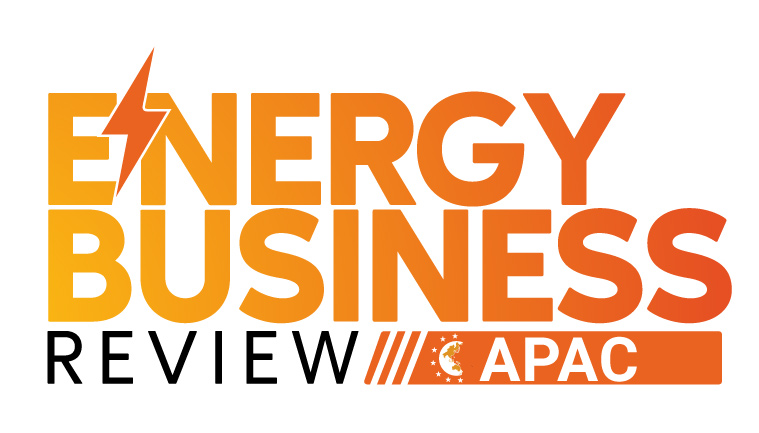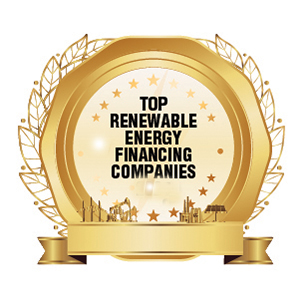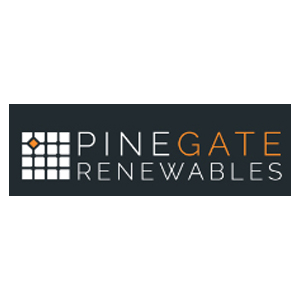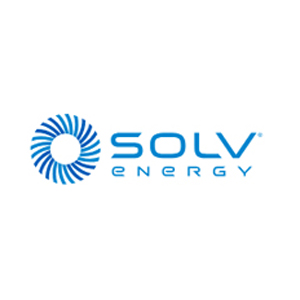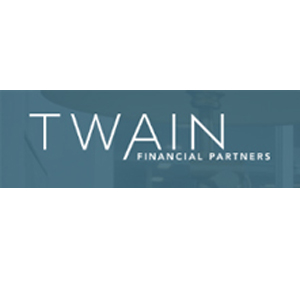\\\\ Top Renewable Energy Financing Companies \\\\
\\\\\\\\\\ Top Renewable Energy Financing Companies \\\\\\\\\\
-
Ergenics
Ergenics develops scalable hydrogen technologies that convert low-grade heat into high-pressure energy. Its hydride-based systems provide cost-effective, dispatchable electricity, supporting renewable energy adoption and reducing reliance on fossil fuels.
More in News
Virtual Power Plants and the Asia-Pacific Energy Transformation
Monday, November 24, 2025
Fremont, CA: The Asia-Pacific energy landscape is rapidly shifting from centralized power generation toward distributed energy resources (DERs) to meet growing demands for sustainability, resilience, and efficiency. These smaller-scale, decentralized energy assets, ranging from rooftop solar panels and battery storage systems to electric vehicles and smart appliances, are increasingly playing a pivotal role in the region's energy future. However, the true potential of these individual assets is unlocked through the innovative concept of Virtual Power Plants (VPPs). The Evolution of Energy Management The region's abundant solar potential, coupled with declining costs of photovoltaic technology and battery storage, has led to a proliferation of behind-the-meter installations. As more homes, businesses, and industrial facilities integrate these technologies, the need for intelligent management and coordination becomes paramount. VPPs offer a solution by providing a centralized control system that can monitor, forecast, and dispatch energy from these diverse sources. Functionally, a VPP acts as a sophisticated orchestrator. It receives data from connected DERs, analyzes grid conditions and market signals, and then sends optimized commands to individual assets. For instance, during periods of high electricity demand, a VPP can instruct household batteries to discharge stored solar energy back into the grid or initiate demand response programs with commercial and industrial facilities to temporarily reduce their energy consumption. Conversely, when renewable energy generation is abundant, the VPP can direct excess power to charge batteries or to power flexible loads. This dynamic interaction helps to balance supply and demand in real-time. Benefits for a Resilient Grid The benefits derived from this aggregation are substantial. By pooling the flexibility and capacity of numerous DERs, VPPs contribute significantly to grid stability. They can quickly respond to fluctuations in renewable energy output, helping to smooth the intermittency often associated with solar and wind power. This responsiveness enhances the overall reliability of the electricity system and reduces the reliance on traditional, often fossil fuel-based, peaking power plants. Furthermore, VPPs facilitate the deeper integration of renewable energy into the grid, accelerating the transition towards a cleaner energy mix across the APAC region. This decentralized approach also fosters greater energy security by distributing power generation across a wider network, making the grid more resilient to localized disruptions. VPPs are transforming energy consumers into active participants in the energy market, enabling their distributed energy assets to make meaningful contributions to the grid's operation and stability. This evolution signifies a fundamental shift in how electricity is generated, managed, and consumed, laying the groundwork for a more agile, sustainable and reliable energy future in the APAC region.
The Rise of Strategic Marketing in Renewable Energy's Global Expansion
Monday, November 24, 2025
The global energy landscape is evolving with renewable energy, transitioning from a subsidy-dependent industry into a cost-competitive, market-driven force that consumers, corporations, and governments increasingly favor. This shift has been propelled by technological advancements, declining costs of wind and solar power, improved energy storage, and supportive policy frameworks, collectively leveling the playing field with fossil fuels. Yet, beyond innovation and economics, strategic marketing has emerged as a pivotal catalyst in this transition, redefining the narrative from niche environmentalism to mainstream economic and social value. As subsidies recede, marketing now plays a central role in shaping demand, positioning renewables not only as a sustainable choice but also as a compelling solution for diverse stakeholders across global markets. Crafting Compelling Value Propositions At the heart of this marketing-led transformation is a nuanced understanding of consumer and corporate motivations. The modern energy consumer, whether an individual homeowner or a multinational corporation, is increasingly sophisticated. While the environmental benefits of clean energy remain a significant driver, the decision-making process is now equally influenced by economic and social considerations. Effective marketing in the renewable energy sector, therefore, goes beyond simplistic "green" messaging. It crafts a narrative that speaks to a broader set of values and aspirations. For individual consumers, this means highlighting the tangible benefits of energy independence, long-term cost savings, and the appeal of being part of a forward-thinking community. Marketing messages are increasingly tailored to showcase how adopting renewable energy can enhance a homeowner's lifestyle, providing not just a cleaner energy source but also greater control over their energy consumption and expenditure. The emotional appeal of contributing to a more sustainable future is a powerful motivator, and successful marketing campaigns are adept at weaving this into a compelling story of personal empowerment and responsible citizenship. For the corporate world, the value proposition is framed around a different, albeit equally compelling, set of priorities. In an era of heightened corporate social responsibility and growing investor scrutiny of environmental, social, and governance (ESG) performance, renewable energy has become a strategic imperative. Marketing efforts in this sphere focus on demonstrating how a commitment to clean energy can enhance brand reputation, attract and retain top talent, and mitigate the risks associated with volatile fossil fuel markets. The narrative here is one of smart business, where sustainability and profitability are not mutually exclusive but are, in fact, inextricably linked. By positioning renewable energy as a driver of innovation, resilience, and long-term value creation, marketing is helping to integrate it into the core business strategies of organizations worldwide. Reaching and Engaging the Modern Energy Consumer The rise of digital marketing has been a game-changer for the renewable energy industry. The ability to target specific audiences with personalized and engaging content has enabled the sector to reach a far broader and more diverse customer base than ever before. Digital platforms have become the primary channels for educating consumers, dispelling myths, and building communities around the shared goal of a clean energy future. Content marketing, in particular, has emerged as a powerful tool for building trust and credibility. By providing valuable and informative content, such as articles, videos, and interactive tools, renewable energy providers can position themselves as trusted advisors rather than merely selling a product. This educational approach is crucial in an industry where the technology and financial models can often be complex and intimidating for the average consumer. Through clear and accessible communication, marketing is demystifying renewable energy and empowering individuals and businesses to make informed decisions. Social media platforms have also become instrumental in amplifying the message of clean energy. They provide a forum for dialogue, enabling a two-way conversation between providers and consumers. This direct engagement helps to build brand loyalty and foster a sense of community. The viral nature of social media allows for the rapid dissemination of positive stories and testimonials, creating a powerful ripple effect that can significantly influence public perception and drive adoption. Building Brands That Inspire and Resonate In a maturing and increasingly competitive market, brand building has become a critical differentiator. A strong brand in the renewable energy sector is one that not only communicates technical competence and reliability but also embodies a set of values that resonate with its target audience. It is a brand that inspires trust, confidence, and a sense of shared purpose. The visual identity of a brand is also a crucial element in conveying its message. The use of clean, modern aesthetics and imagery that evokes a sense of optimism and progress can position a renewable energy provider as a forward-thinking and innovative leader. A well-crafted brand identity can cut through the noise of a crowded marketplace and create a lasting impression in the minds of consumers. As the renewable energy sector continues its upward trajectory, the role of marketing will only become more crucial. The transition to a clean energy economy is not just a technological challenge; it is also a communications challenge. It requires a concerted effort to educate, inspire, and mobilize a diverse range of stakeholders. Marketing is the engine that will drive this effort, shaping public perception, creating market demand, and ultimately, accelerating the adoption of renewable energy on a global scale. The future of the renewable energy industry will be defined not only by the efficiency of its solar panels and wind turbines but also by the effectiveness of its marketing campaigns. By crafting compelling value propositions, leveraging the power of digital media, and building brands that resonate with the values of a new generation of consumers, the renewable energy sector is not just selling a product; it is selling a vision of a cleaner, healthier, and more prosperous future. Subsidies will not power the next wave of growth in renewable energy, but the power of persuasive and strategic marketing.
Revolutionizing the Energy Sector with Blockchain Technology
Monday, November 24, 2025
FREMONT, CA: The energy sector, essential to contemporary society, is experiencing a significant shift fueled by technological innovations. Among these advancements, blockchain technology is a formidable force capable of changing how energy is generated, shared, and utilized. With its ability to enhance transparency, security, and efficiency, blockchain is set to redefine the energy industry. Applications of Blockchain in the Energy Industry Blockchain technology transforms the energy industry by enabling innovative solutions across several key areas. One of the primary applications is peer-to-peer energy trading, where blockchain allows consumers and producers to trade energy directly, bypassing traditional intermediaries. Transactions are automated through smart contracts, which reduce costs and enhance efficiency, empowering consumers to sell surplus power from renewable sources, such as solar panels. In renewable energy certificate (REC) tracking, blockchain provides a transparent, verifiable system for managing RECs, ensuring the authenticity of renewable energy claims and preventing fraudulent practices. Similarly, blockchain plays a pivotal role in supply chain management by offering end-to-end visibility of energy resources, helping to track their origin and journey and reducing the risk of counterfeit products within the supply chain. Blockchain also supports grid management and optimization by enabling smart grids that facilitate real-time data sharing and automated control, improving grid reliability and energy efficiency. Additionally, energy data management is enhanced with blockchain's secure storage capabilities, allowing for collecting and analyzing extensive data on consumption patterns, generation, and market information to inform decision-making and predictive analytics. Benefits of Blockchain in the Energy Industry Blockchain brings numerous benefits to the energy sector, notably transparency and trust, as its immutable ledger ensures a reliable, transparent record among all ecosystem participants. The security afforded by cryptographic techniques mitigates risks related to cyberattacks and data breaches, safeguarding transactions and sensitive information. With the efficiency gained through automation and streamlined processes, operational costs are reduced, and overall productivity is improved. Blockchain also supports sustainability by promoting renewable energy adoption through peer-to-peer trading and transparent REC tracking. At the same time, the resilience offered by decentralized networks reduces dependency on centralized infrastructure, strengthening the robustness of energy systems. Integrating blockchain technology in the energy sector presents transformative use cases and real-world applications that enhance efficiency, transparency, and sustainability. One significant area is energy trading and marketplaces, where blockchain enables peer-to-peer energy trading. This decentralized approach allows consumers and producers to transact directly, removing the need for intermediaries and reducing costs. Furthermore, smart contracts can automate trading processes and optimize market operations, further driving down transaction expenses. In renewable energy certification, blockchain ensures the authenticity and integrity of Renewable Energy Certificates (RECs), effectively preventing fraud and double-counting. Additionally, it enhances supply chain transparency by tracing the origin and journey of renewable energy, thereby improving visibility and accountability. Blockchain also plays a crucial role in grid modernization and the integration of renewable energy. It facilitates the seamless incorporation of distributed energy resources (DERs), such as solar panels and wind turbines, into existing grid infrastructure. By providing real-time data and automated control, blockchain optimizes grid operations, improves reliability, and minimizes energy losses. In energy efficiency and demand response, blockchain can support creating incentive programs that reward energy-efficient behaviors, including time-of-use pricing and demand response initiatives. By tracking energy consumption patterns, blockchain empowers consumers to make informed decisions and optimize their energy usage effectively. As the energy industry evolves, blockchain technology is poised to play a pivotal role in shaping a more sustainable, efficient, and equitable energy future. By embracing this innovative technology, the industry can unlock opportunities and address pressing global energy challenges.
Energy Procurement's Vital Role in Business Success
Friday, November 21, 2025
Fremont, CA: Energy procurement is a strategic process for an organization to obtain energy from any source, be it electricity, gas, or renewables. Sourcing, contract management, negotiations, and price forecasting are included in the procurement process to optimize energy usage and cost. This will help businesses stabilize energy costs amid fluctuating market conditions, regulatory changes, and geopolitical factors with the help of fixed-rate contracts or long-term agreements. Predictability helps businesses budget more effectively, reducing financial uncertainty and enabling better resource allocation. Energy procurement allows enterprises to analyze consumption patterns and identify areas for efficiency improvements. By understanding energy usage, companies can implement strategies such as demand response, energy efficiency programs, and investing in renewable energy sources. These measures lower energy bills and contribute to a more sustainable operational model. The energy market has various risks, including price volatility, supply chain disruptions, and regulatory changes. Effective energy procurement helps businesses mitigate these risks by diversifying their energy sources and suppliers. By sourcing energy from multiple suppliers or investing in alternative energy solutions, companies can reduce their dependency on any single source, thus safeguarding against potential disruptions. Energy procurement strategies can include hedging mechanisms that protect businesses from price spikes. These risk management strategies ensure that companies remain resilient in fluctuating energy markets, helping them maintain operational stability. Many jurisdictions offer incentives for businesses that engage in sustainable energy practices, such as tax breaks or grants. By strategically procuring energy, companies can leverage these incentives, reducing operational costs while contributing positively to the environment. Energy procurement also involves navigating a complex landscape of regulations and compliance requirements. Staying informed about regulatory changes also allows businesses to take advantage of incentives and programs that promote energy efficiency and sustainability. The proactive approach minimizes compliance risks and positions companies as leaders in their respective industries. Effective energy procurement ensures businesses comply with these regulations, thus avoiding potential fines and legal issues. Engaging in energy procurement often leads to establishing strategic partnerships with energy providers, consultants, and technology firms. The partnerships can facilitate access to innovative energy solutions and technologies like smart grids and energy management systems. By leveraging these innovations, businesses can enhance their energy efficiency and optimize their overall energy strategy. Energy procurement is a vital component of modern business strategy. Businesses can control costs, mitigate risks, enhance sustainability, ensure compliance, and foster innovation by effectively managing energy acquisition. Embracing energy procurement as a strategic priority is a cost-saving measure and an essential step toward building a resilient, sustainable, and forward-thinking organization.
Revolutionizing Natural Gas Storage: Strategies and Solutions
Thursday, November 20, 2025
Fremont, CA: Advancements in natural gas storage technologies are revolutionizing energy storage and distribution. Innovations in underground, compressed, liquefied, and adsorption storage techniques improve efficiency and sustainability within the natural gas industry. Underground natural gas storage remains the most widely used method for storing natural gas, involving gas injection into porous rock formations, salt caverns, or depleted oil and gas reservoirs. Although this method has been used for a long time, innovations have significantly improved its efficiency and safety. Integrating advanced monitoring systems allows for real-time data collection, helping detect potential leaks and optimize storage processes. Enhanced geological modeling and simulation techniques have also increased storage efficiency by improving the understanding of rock formations and gas flow, maximizing storage capacity, and extending the life of underground storage systems. Compressed natural gas involves storing natural gas at high pressures within specially designed containers. Recent breakthroughs in this field focus on the materials used to construct these storage tanks. Using lightweight, high-strength composite materials such as carbon fiber and fiberglass-reinforced composites has significantly improved storage capacity while reducing the weight of tanks. These innovations make CNG storage systems more efficient and cost-effective. Advances in pipeline technology and compression systems are enhancing the distribution of compressed natural gas, allowing for more efficient and widespread delivery to residential, commercial, and industrial users. Liquefied natural gas (LNG) storage involves cooling natural gas to very low temperatures to convert it into a liquid form, reducing its volume significantly. Innovations in LNG storage include improved cryogenic tank designs and materials that enhance the thermal efficiency of storage systems. Vacuum-insulated and double-walled tanks reduce heat transfer and minimize gas loss during storage. Floating LNG platforms have also emerged, allowing for offshore liquefaction, storage, and transportation of LNG, which reduces reliance on costly onshore infrastructure. In addition, small-scale LNG storage solutions are gaining popularity, offering cost-effective and flexible options for areas without access to large pipeline networks. Adsorption storage is a newer method that utilizes porous materials, such as activated carbon or metal-organic frameworks (MOFs), to store natural gas at lower pressures and temperatures. MOFs have demonstrated significant potential due to their ability to store substantial amounts of gas compactly. Using these high-capacity adsorbents could lead to more efficient and cost-effective storage systems.
Strategies to Transform Oil and Gas for Sustainability
Wednesday, November 19, 2025
Fremont, CA: The oil and gas industry, a backbone of the global economy, is experiencing immense technological, environmental, and economic challenges. As sustainability and decarbonization become the new normal, companies must be able to offer innovative solutions to meet global energy demands and ensure the industry remains competitive. The oil and gas sector faces a great challenge in promoting environmental sustainability because of its significant contribution to climate change, especially greenhouse gas emissions. The industry is urged to adopt cleaner technologies and shift energy production and consumption to reduce its carbon footprint. This includes investing in renewable energy, carbon capture and storage (CCS), and reducing emissions from extraction, transportation, and processing. The sector still faces a significant challenge in balancing energy production with environmental impact. The oil and gas industry is fast-paced, constantly developing new tools and techniques that improve efficiency, safety, and productivity. However, these rapid changes often bring new complications and risks. Introducing automation, artificial intelligence, and digital twins to current infrastructure is daunting. Moreover, cybersecurity issues pose a threat to safeguarding sensitive data while keeping critical infrastructure intact. Therefore, it requires long-term investment and vigilance. The oil and gas sector is highly challenged by fluctuating oil prices, which are influenced by geopolitical tensions, changes in global demand, and natural disasters. Companies must diversify their portfolios, invest in resilient infrastructure, and develop agile business models to adapt to this unpredictability. Such uncertainty requires financial and operational flexibility for survival and growth in the industry. The industry needs more labor in the current scenario due to the ever-increasing requirement for skilled workers who will manage advanced systems and technologies. Therefore, training programs for attracting and retaining talent in the industry have to be developed along with collaboration with educational institutions so that an adequately prepared workforce is provided for the future. Furthermore, regulatory and political factors characterize much of the oil and gas services sector. Governments worldwide are starting to enforce stiffer environmental regulations, mainly carbon pricing and emissions cutbacks, compelling corporations to amend their plans and procedures. Political unrest in many regions also hampers investment and continuous operations. Balancing strict regulations with profit is a tightrope for most oil and gas service businesses. This oil and gas service industry stands at a critical juncture. The sector encounters many grand challenges, such as environmental concerns, technological integration, market volatility, workforce shortages, and regulatory hurdles, which present opportunities for innovation, collaboration, and long-term growth. As the world transitions towards a more sustainable energy future, the oil and gas services sector must adapt and change to remain indispensable in the global energy picture.
